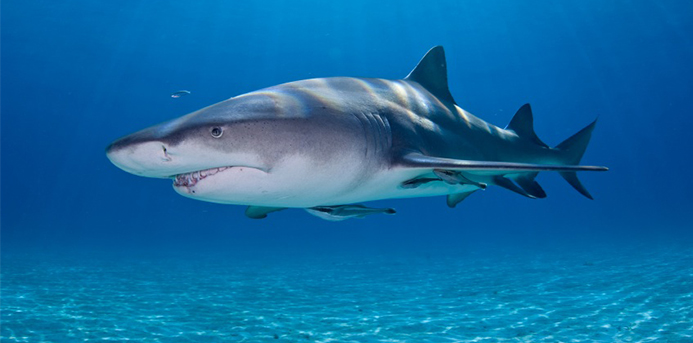There must be something in the water.
Whether or not you’re a fan of Discovery Channel’s “Shark Week” or you celebrated the 40th anniversary of “Jaws” this summer, you’ve probably been thinking twice lately about jumping into the water.
With two recent attacks in North Carolina and an attack in South Africa that nearly took the life of pro-surfer Mick Fanning, sharks have been living up to their reputation as man-eaters. While these attacks drive most people out of the water, there is a select group of people that wish to meet this predator face-to-face. I am one of those (possibly crazy!) people, and here’s an account of my thrilling experience.
Adrenaline-Pumping Encounter
Jacob, a 12-foot great white shark, is charging toward me in the water. The only thing I can make out is his jet-black fin as he rushes through the murky water. My adrenaline is pumping, and while some would say I am in danger, the galvanized steel cage around me ensures that I will survive this encounter.
If you plan on crossing this activity off your bucket list in the future or want to liven up your next beach vacation, you should look into cage diving. Cage diving with great white sharks is a booming industry in South Africa, Australia and California. The idea is simple. A steel cage, which typically holds four to eight divers, is lowered into the water off the side of a boat. The roof of the cage, which most people like to know is about 2 feet above the water, is opened up, and divers carefully climb down into the cage, submerging themselves into the water. Once in the water, the roof hatch is closed. The cage is never fully lowered into the water, and divers watch for sharks to approach with their heads above water. Sporting goggles and a wetsuit that comes equipped with weights around the waist, divers decide for themselves when it is the right time to go under water and get a look at these magnificent animals as they swim by.
The great whites typically swim up to the cage, head first, and then veer away from it, realizing they are unfamiliar or – better yet – scared of the cage. The sharks will swim by the cage, with their gills facing the divers, showing off their full profiles. Crewmembers on board will cast out a rope baited with fish heads, along with a fake seal on another rope. (Editor’s note: The practice of baiting sharks with fish and other lures, known as chumming, is controversial. Some scientists caution that the practice may disrupt natural shark behaviors and the ocean ecosystem.) The sharks will attack both of these objects as they float on the water, and in some cases, they will swim perpendicular to the bait and then soar above sea level with the simulated prey dangling from their jaws. This spectacle is better witnessed from inside the cage, but nearly as thrilling when on board the boat. During this excursion, people are able to witness the immense power, size and athleticism of great white sharks. Once you’ve seen them up close and personal, you’ll never look at great whites the same.
Where to Swim With Sharks
Gansbaai, South Africa, also known as the “Great White Shark Capital of the World,” is a prime location to witness these creatures in action. With a number of commercial cage-diving companies, you are guaranteed to enjoy your experience. Marine Dynamics, founded by Andre Hartman, is always a safe bet when planning this excursion. The company not only works to provide safe cage-diving experiences, but also works with marine biologists to help preserve and educate people about the great white shark population. Marine Dynamics offers easy transportation to and from Gansbaai, making this excursion painless. The dive costs $160 per person, plus a $40 dollar transportation fee. No prior scuba training is required.
If you still are dying to go cage diving, but can’t make it all the way to South Africa, there are options closer to home. Cage diving is available in California, along the Guadalupe and Farallon Islands. Great White Adventures has been leading successful tours since 1998. They have a perfect safety record and support environmental responsibility on all of their eco-tours. GWA provides surface-supplied diving equipment, so there will be a fee for diving air, but no prior scuba experience is required. The company does offer submersible cage diving, allowing divers to submerge further into the great white’s world, but scuba certification is required for this style. The trip costs $775 per person. If you don’t feel like getting in the cage with the great whites, you can pay $375 to be a topside observer on the boat.
If you enjoyed this article, don’t miss these:

